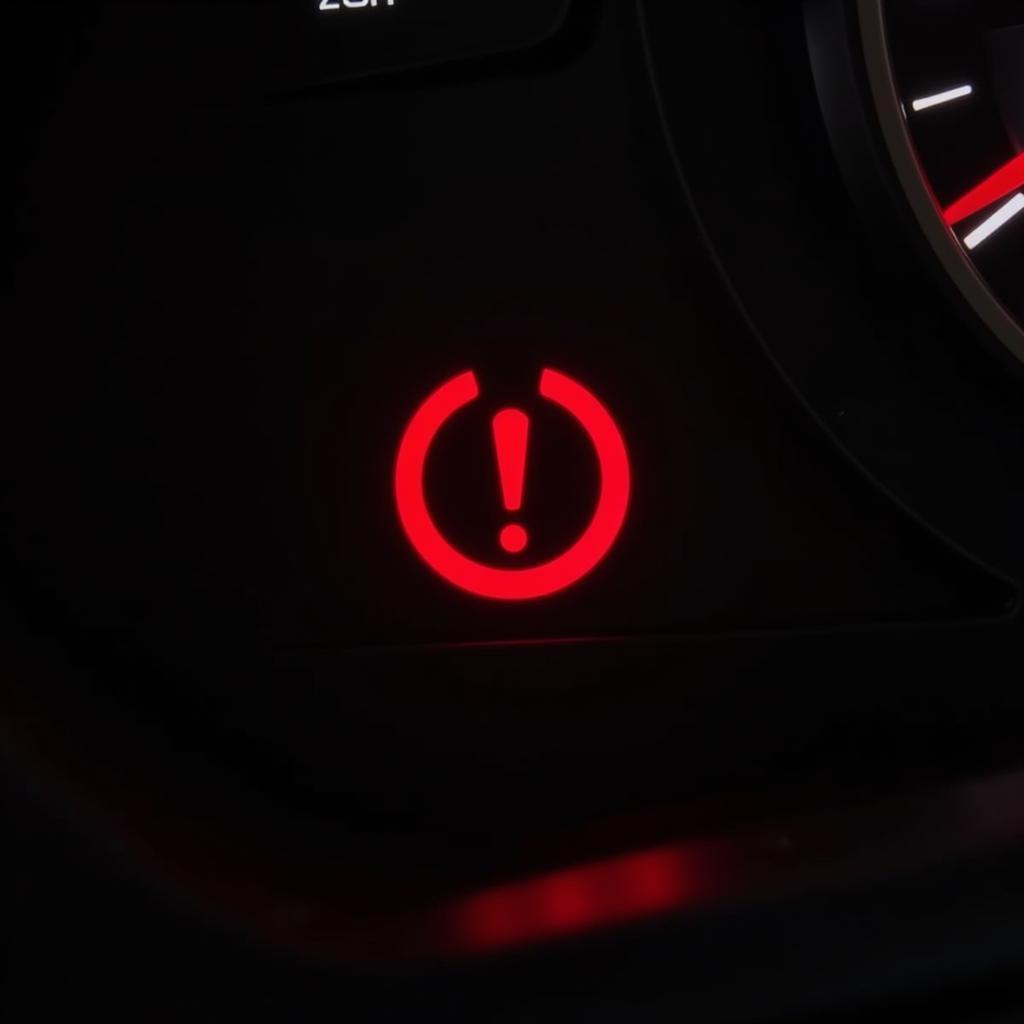The brake system warning light is one of the most important lights on your dashboard. It’s designed to illuminate if your car senses a problem with any component of your braking system. Ignoring it could lead to brake failure and a serious accident. This comprehensive guide will provide everything you need to know about the brake system warning light, from its various meanings to troubleshooting tips and when to seek professional help.
What Does the Brake System Warning Light Mean?
The brake warning light is typically a circular symbol with an exclamation point (!) inside, surrounded by parentheses. Some vehicles may display the word “BRAKE” within the circle. This light can illuminate for a variety of reasons:
- Parking brake is engaged: This is the most common reason. Ensure your parking brake is fully released. The light should disappear once you disengage the brake.
- Low brake fluid level: This is a serious issue. Low brake fluid can indicate a leak in your brake lines, which can lead to brake failure.
- Hydraulic system issue: Your brake system uses hydraulic pressure to function. A problem with the master cylinder, brake lines, or calipers can cause the light to turn on.
- ABS problem: If your anti-lock braking system (ABS) malfunctions, the warning light may illuminate.
- Brake pad wear: Many modern cars have sensors that monitor brake pad thickness. If your pads are worn down, the light will activate, signaling the need for replacement.
 Brake system warning light on dashboard
Brake system warning light on dashboard
How to Troubleshoot the Brake System Warning Light
If your brake warning light comes on, don’t panic. Here’s a step-by-step guide to help you troubleshoot the issue:
- Check your parking brake: As mentioned, this is the most common culprit. Make sure it’s fully disengaged.
- Inspect your brake fluid level: Locate the brake fluid reservoir under the hood (refer to your owner’s manual). Check the fluid level. If it’s low, add the correct type of brake fluid as specified by your vehicle manufacturer.
- Visually inspect your brakes: Look for any signs of leaks around the brake lines, calipers, and master cylinder. If you notice any leaks, do not drive the vehicle and contact a mechanic immediately.
- Check your brake pedal: Does it feel spongy or go all the way to the floor? This could indicate air in the brake lines or a serious hydraulic problem.
“Remember, your car’s braking system is incredibly complex,” advises John Miller, a veteran automotive engineer with over 20 years of experience. “While these checks can help identify simple issues, it’s always best to err on the side of caution and consult a qualified mechanic if you’re unsure about anything.”
 A person checking the brake fluid level in a car
A person checking the brake fluid level in a car
When to Seek Professional Help
If the brake warning light remains on after performing the initial checks, or if you experience any of the following, seek professional help immediately:
- Brake fluid loss without visible leaks: This could indicate an internal leak within the brake system.
- Spongy or soft brake pedal: This suggests air in the brake lines, requiring bleeding the system.
- Grinding noise when braking: This usually means your brake pads are completely worn and require immediate replacement.
- Pulling to one side when braking: This indicates uneven brake force and could be caused by a faulty caliper or brake hose.
Air Brake Pressure Warning Switch and Parking Brake Warning Light
While this article focuses on the general brake system warning light, it’s important to note that some vehicles may have additional warning lights for specific brake-related issues. For instance, vehicles with air brakes might have an air brake pressure warning switch that illuminates if there’s a problem with the air pressure in the braking system. Similarly, a parking brake warning light definition pertains specifically to issues with the parking brake mechanism and may provide additional information beyond the general brake warning light.
 Car on a lift for brake inspection at a mechanic shop
Car on a lift for brake inspection at a mechanic shop
Conclusion
The brake system warning light is a crucial safety feature in your car. Understanding its meaning and potential causes empowers you to address issues promptly and safely. Never ignore this warning light. If you’re unsure about anything, always consult a qualified mechanic to diagnose and repair any brake-related problems. Remember, a well-maintained braking system is essential for your safety and the safety of others on the road.
